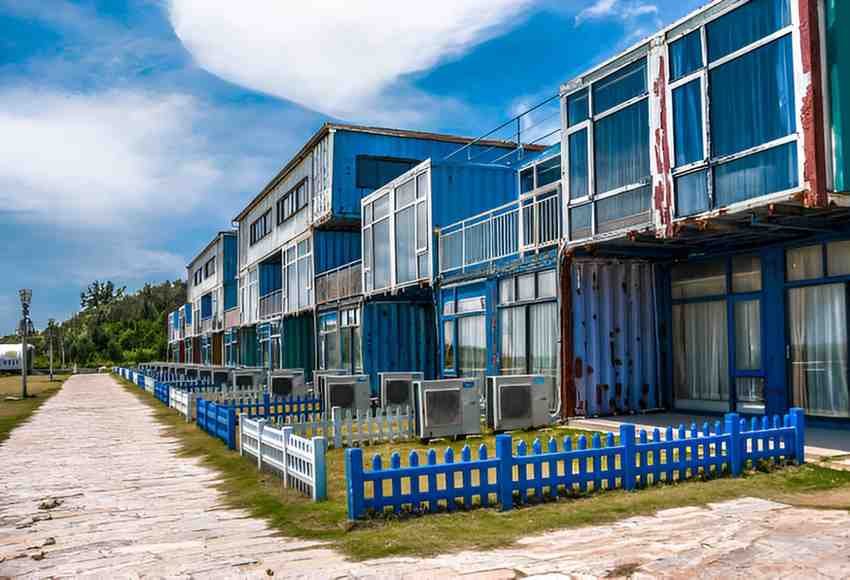As the world continues to search for sustainable, cost-effective housing solutions, container homes have gained significant attention. I’ve come across many discussions about them and felt compelled to dig deeper into whether container homes truly make for a solid investment. In this article, I’ll explore all the angles, comparing costs, benefits, challenges, and potential returns, so you can determine whether building or buying a container home is the right financial decision.
Table of Contents
What Are Container Homes?
Container homes are exactly what they sound like – houses made from repurposed shipping containers. These containers, typically made of steel, are used to transport goods across the globe, but they can also be transformed into functional living spaces. Some people opt for a single container, while others combine several to create larger homes. These homes are highly customizable, with design options ranging from minimalistic to modern luxury.
Why Container Homes?
The appeal of container homes is obvious – they’re affordable, eco-friendly, and versatile. However, these benefits are often weighed against the challenges of construction, limited space, and resale value. Before jumping into the investment side of things, let’s take a look at both the pros and cons of container homes.
The Pros of Container Homes
1. Cost-Effective
One of the most enticing aspects of container homes is their cost. New shipping containers are relatively inexpensive, typically ranging from $1,500 to $5,000 each, depending on size and condition. Even used containers can be purchased for much less. While the cost of transforming the container into a liveable home can add up, it is often far less expensive than building a traditional home.
Let’s break it down:
- Cost of a single 20ft shipping container: $1,500 to $5,000
- Cost of transforming it into a home (basic build): $15,000 to $30,000
- Cost of traditional home (per square foot): $150 to $250
Thus, for the price of a modest 1,000-square-foot traditional home, you could potentially have an entire container home complex, depending on the location and level of customization.
2. Eco-Friendly
Container homes are considered a form of recycling. Shipping containers are built to withstand the harshest environments, and repurposing them for housing helps keep them out of landfills. Using fewer new materials in construction also reduces carbon footprints. If sustainability is a top priority for you, container homes are an attractive option.
3. Durability and Strength
Containers are designed to carry heavy loads and endure rough conditions. This makes them incredibly durable. With proper insulation and waterproofing, they can last for many decades. Their steel construction also makes them resistant to termites and other common pests, unlike wooden homes.
4. Customizable and Flexible
Container homes are highly versatile. You can stack them, place them side by side, or even incorporate other materials like wood or glass. The design possibilities are practically endless, and they can be adapted for different climates and purposes. Whether you want a cozy single-container cabin or a sprawling multi-container mansion, you can make it happen.
The Cons of Container Homes
1. Zoning and Legal Issues
One of the major hurdles when it comes to container homes is zoning and building codes. In many places, local authorities have strict regulations about the types of homes that can be built in certain areas. This can make getting permits for container homes difficult. Depending on your location, you may need to invest extra time and money into navigating the bureaucracy.
2. Space Constraints
Shipping containers are limited in size. A single 20-foot container is around 160 square feet, which is relatively small for a home. You could, of course, combine multiple containers, but this adds to the cost and complexity of the build. For families or those seeking more space, container homes may not provide enough room without significant alterations.
3. Insulation and Temperature Control
While containers are durable, they are not naturally insulated, which can lead to uncomfortable living conditions if not addressed. Steel conducts heat and cold, making the interior of a container prone to temperature extremes. Without proper insulation, container homes can become unbearably hot in the summer and freezing in the winter. High-quality insulation adds to the cost of construction, but it’s a necessary step to make the home livable.
4. Resale Value
Container homes are still relatively niche, and resale value can be a concern. If you’re planning to sell your container home in the future, you might find it difficult to find a buyer who appreciates the concept. While the eco-friendly nature of container homes could make them appealing to some, many people may prefer traditional homes with more space, especially if they’re unfamiliar with the container concept.
Financial Considerations of Container Homes
Investing in a container home comes down to both initial costs and long-term returns. Let’s go over some key financial aspects that can help you make an informed decision.
Initial Investment Breakdown
| Item | Estimated Cost |
|---|---|
| Shipping container (20ft) | $1,500 to $5,000 |
| Site preparation (land, permits) | $3,000 to $10,000 |
| Container home conversion (basic) | $15,000 to $30,000 |
| Insulation and waterproofing | $5,000 to $10,000 |
| Additional materials (windows, doors) | $2,000 to $8,000 |
| Total | $30,500 to $63,000 |
While these are rough estimates, they provide a ballpark figure for a basic container home. Keep in mind, the actual cost can fluctuate depending on location, design, and the complexity of the build.
Potential Rental Income
If you plan to rent your container home, you’ll need to consider the potential rental income. For instance, if you are in a desirable location, a small container home could rent for $500 to $1,500 per month. Larger multi-container homes or those in premium locations could fetch much higher rates. Assuming a rental income of $1,000 per month, here’s how the financials might play out:
| Investment Scenario | Estimate |
|---|---|
| Initial Investment | $50,000 |
| Monthly Rent Income | $1,000 |
| Annual Rental Income | $12,000 |
| ROI (Return on Investment) | 24% per year |
This is a very basic scenario, but it shows the potential profitability of container homes as rental properties. With the right location and build, you could achieve solid returns on your investment.
Comparing Container Homes to Traditional Homes
Let’s take a closer look at how container homes compare to traditional homes when it comes to costs and potential returns. Here’s a breakdown of the key differences.
| Aspect | Container Homes | Traditional Homes |
|---|---|---|
| Initial Investment | $30,000 to $60,000 | $150,000 to $300,000 |
| Land and Permits | $3,000 to $10,000 | $10,000 to $50,000 |
| Maintenance | Lower (less wood) | Higher (due to materials) |
| Energy Efficiency | Can be high with insulation | Varies (typically better insulated) |
| Return on Investment | Higher potential ROI if rented | Lower ROI, slower appreciation |
| Time to Build | 2 to 6 months | 6 to 12 months |
The Long-Term Investment Perspective
While container homes can provide an impressive return on investment, they’re not without their long-term challenges. Over time, you’ll need to consider:
- Maintenance costs: Although container homes are durable, they still require regular upkeep, especially to prevent rust and other damage.
- Appreciation: While traditional homes appreciate over time, container homes may not appreciate at the same rate due to their niche nature.
- Market demand: As container homes become more common, there may be a shift in the market that makes them more appealing or, conversely, less desirable.
Conclusion: Are Container Homes a Good Investment?
In my analysis, container homes are a unique investment opportunity. They offer lower initial costs, flexibility in design, and the potential for high returns if rented. However, they also come with challenges, particularly related to space, zoning, and resale value.
If you’re looking for an affordable, sustainable, and customizable housing option, a container home can be a great investment. But if you’re after long-term appreciation and stability, a traditional home may be the better choice.
Ultimately, the decision depends on your specific goals, budget, and the level of risk you’re willing to take. Container homes are a viable option for the right investor, especially those with a keen interest in innovative and eco-friendly housing solutions.





